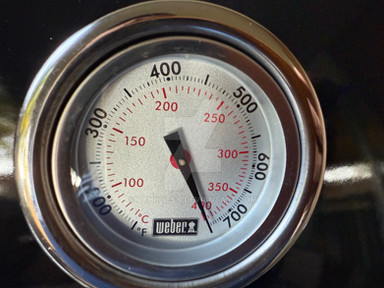HOME | DD
 Logan-Pearce — Tutorial 4. Step 6. Feather Edging
Logan-Pearce — Tutorial 4. Step 6. Feather Edging

Published: 2011-11-13 14:51:59 +0000 UTC; Views: 3342; Favourites: 15; Downloads: 45
Redirect to original
Description
Previous Step: [link]Step 6: Feather Edging
Like every other part of the tutorial, this can be done a multitude of ways. For this I'm going to use a whetstone, steel sharpening rod, and leather strop.
You could use an electrical sharpener, slack belt sharpening, and the list goes on. Which ever method you use, always make sure your edge is thin enough to be sharpened and if you are using machines then watch the heat it generates or you could destroy your heat treating.
No matter which way I sharpen I like to run it across a leather strop, similar to what you would see barbers do in old movies.
The whetstone I am using is pretty ancient, but she gets the job done. The method I use is the same that I use for Japanese waterstones. The only difference is I can't soak mine in water because it is attached to the bottom of the wooden case. For waterstones, most people soak the stone in water for about 5 minutes, before using it.
For mine I put a small amount of water on the top and after a minute it usually is absorbed, so I keep doing this for roughly 5-6 minutes before using it.
A good note is that oil stones are harder to use than waterstones. So if you have a choice and you are just starting out, I would go with water before trying out oil.
Most stones are not like mine. They have two sides with different grits. While others are a set of stones. We always start with the roughest stone first and make our way down to the more fine stone. This way we polish the edge while sharpening it.
I always start with the choil level against the bottom of the stone first. I apply a good amount of pressure, but nothing extreme as I run the blade across the stone, while pulling it towards me at the same time.
I do my best to set my angle of the edge around 15-25 degrees. Usually I stick to the 15-20 degree angle for most of my knives. If you are just starting to do this, then you can use a small matchbook to help set your angle. They are normally around a 20-ish degree angle.
My cycles go like this:
5- left side
5- right side
5- left side
5- right side
5- left side
5- right side
3- left side
3- right side
Then alternate the sides for about 10 times. I make sure to switch the sides each time on these last ten strokes.
This also depends on how thick I left the blade. If your edges are thinner then it will take you less, if they are thicker it will be more.
Usually if you have a brought knife, then its less. Just make sure to have the even amount of pressure, angle, and strokes per side.
So when do you know when to stop? When you can see or feel the burr on the edge of the blade. Which is also referred to as the 'feather' edge, since it is very small pieces of the edge that you can basically wipe off with your finger.
If you have a finer grit stone now is the time to use it. This time don't have to go through as many strokes and you will visibly see the edge starting to polish. You can just go through the same motions as before, but make sure not to put as much pressure on it.
If you only have a single grit stone like the one I'm showing, then you can still give it a slightly more polished edge by having water always present on the stone as you work it. It won't be nearly as polished as using a finer grit, but it will help some.
By the end you should have a nice polished edge and probably a little feather left on it. Which isn't a bad thing. We will get it off in the next step.
Next Step: [link]





Logan Pearce
www.pearceknives.com
Related content
Comments: 7

What is your opinion on using the sharpening kits that have the stones on rods, and it clamps your knife into place, kind of like this one [link] ?
👍: 0 ⏩: 1

I've heard good things about them, but none from people that I personally know. I've never used them myself, so I couldn't tell you. Maybe one day I could try them all out, but I think I would need a lot of experience with each one to really get the full potential out of each style of sharpening.
I mean, I can sharpen with a stone, but not nearly as good as I can with a machine. There are some great sharpeners out there that can get a crazy edge with a stone, but I can rival that with my machine sharpening, only because I've been using that method for so long. Of course all that depends on the steel/heat treatment/etc, but you see what I mean by that.
👍: 0 ⏩: 0

Negative. You need chainsaw files and triangle files for that or the tool that is made for sharpening serrated blades.
👍: 0 ⏩: 1

oh, i was just curious, i never sharpened a serated knife before, and been wondering about that, but thanks for the tip.
👍: 0 ⏩: 0

Um, not really sure. I'm sure Texas Knife Supply, jantz supply, or most likely any kitchen knife store should have them.
👍: 0 ⏩: 0



























